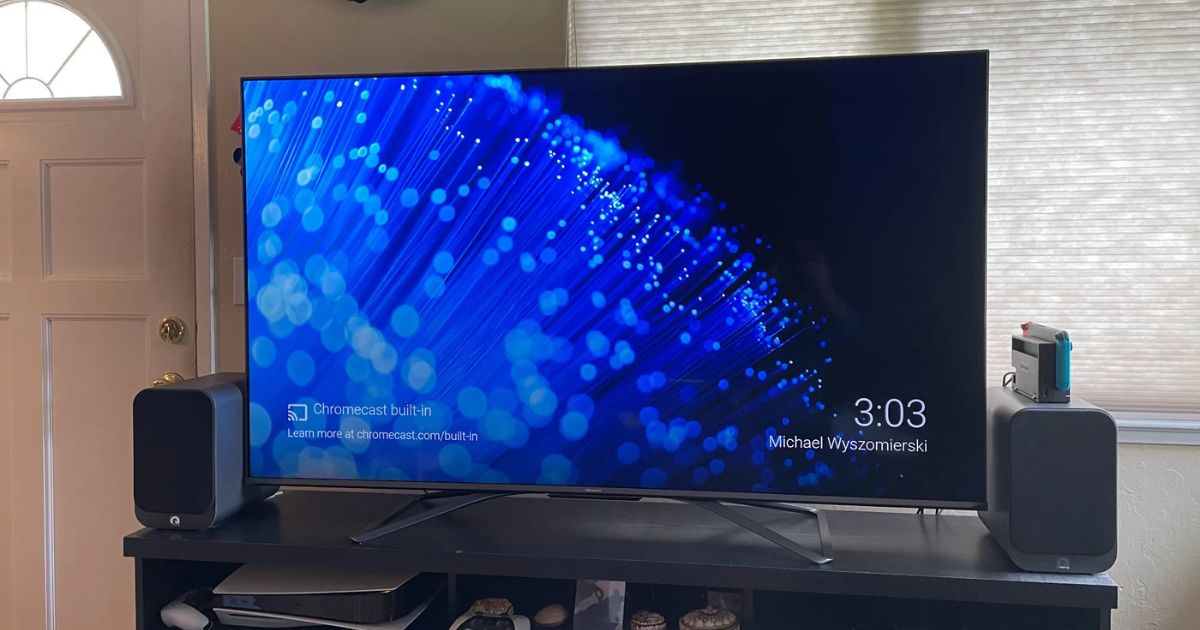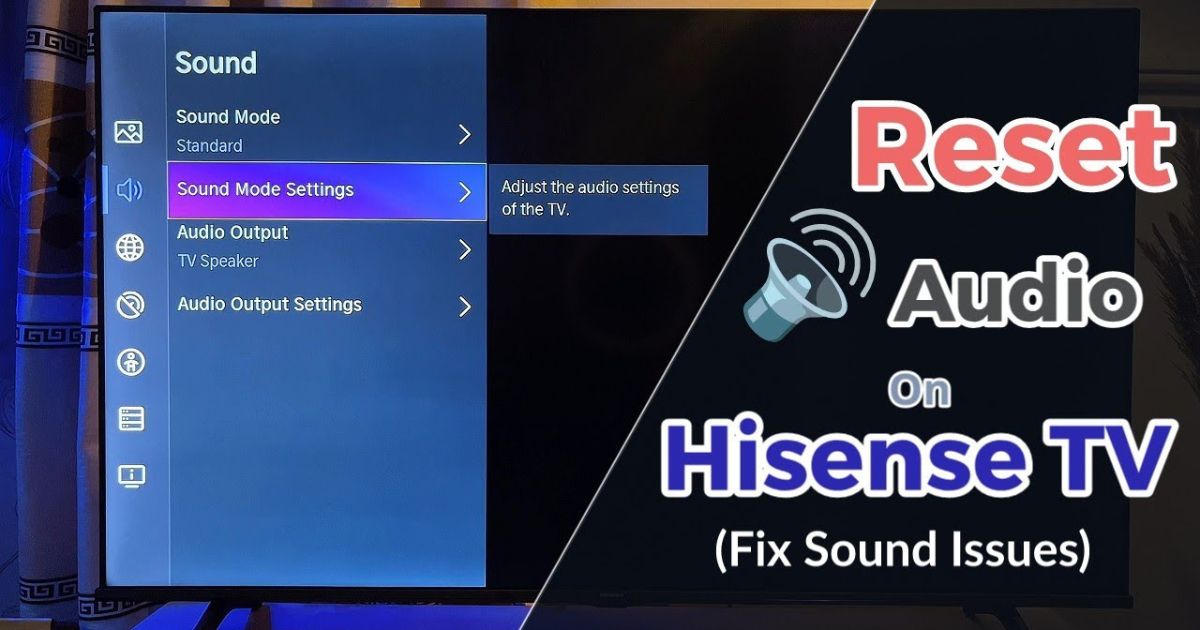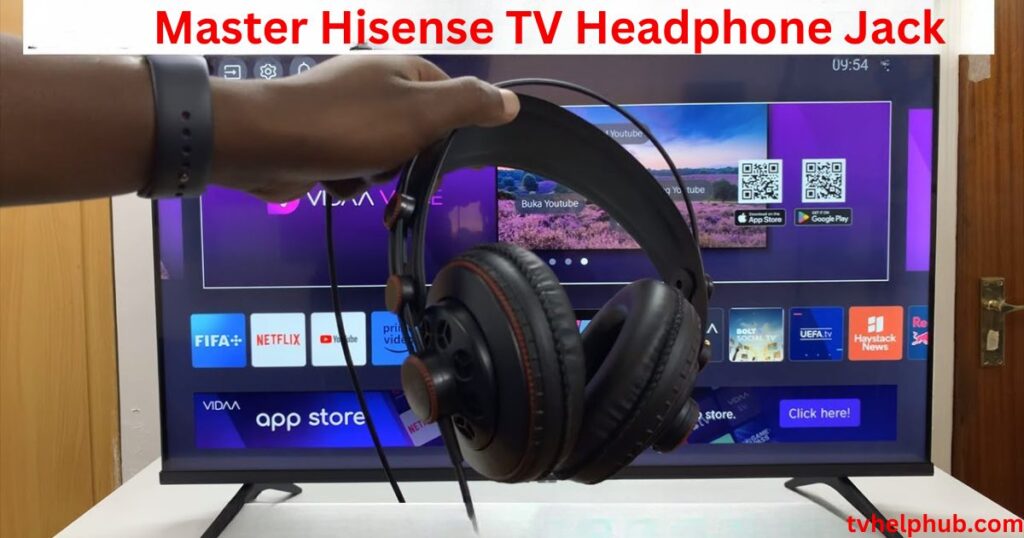Introduction
Are you tired of struggling with your Hisense TV’s headphone jack? Do you wish you could enjoy crystal-clear sound without any hassle? You’re in the right place. This guide will help you master the Hisense TV headphone jack and unlock the perfect sound experience you’ve been dreaming of. Whether you’re using wired headphones, troubleshooting audio issues, or looking to enhance your sound quality, this blog has you covered. By the end, you’ll know exactly how to connect, troubleshoot, and optimize your Hisense TV’s audio output like a pro. Let’s dive in and transform your TV audio experience!
Master Hisense TV Headphone Jack
This guide helps you master the Hisense TV headphone jack for perfect sound. Learn how to connect wired or wireless headphones, troubleshoot common issues like no sound or static, and enhance audio quality using equalizers, external speakers, or surround sound. Discover advanced features like Dolby Atmos and voice enhancement, and avoid common mistakes like ignoring compatibility or skipping firmware updates. By following these steps, you can enjoy crystal-clear, personalized audio for movies, music, and gaming. Transform your Hisense TV audio experience with these easy-to-follow tips and unlock the full potential of your headphone jack.
Understanding the Hisense TV Headphone Jack
 Before you can master the Hisense TV headphone jack, it’s important to understand what it is and how it works. The headphone jack on your Hisense TV is a 3.5mm audio port designed for wired headphones. This simple yet powerful feature allows you to enjoy private listening without disturbing others.
Before you can master the Hisense TV headphone jack, it’s important to understand what it is and how it works. The headphone jack on your Hisense TV is a 3.5mm audio port designed for wired headphones. This simple yet powerful feature allows you to enjoy private listening without disturbing others.
However, not all headphones are created equal. Some may require an adapter, while others might not work seamlessly with your TV. Additionally, the audio output quality depends on your TV’s settings and the headphones you use. Understanding these basics ensures a smooth setup and helps you avoid common pitfalls.
Now that you know the basics, let’s move on to the step-by-step process of connecting your headphones to your Hisense TV.
Steps to Connect Headphones to Hisense TV
Connecting headphones to your Hisense TV is easier than you might think. Follow these simple steps to master the Hisense TV headphone jack:
- Locate the Headphone Jack: The first step is to find the 3.5mm headphone jack on your TV. It’s usually located on the side or back of the TV.
- Plug in Your Headphones: Once you’ve located the jack, plug your headphones firmly into the port. Make sure the connection is secure to avoid any audio issues.
- Adjust Audio Settings: Next, go to your TV’s settings menu and select “Audio Output.” From there, choose “Headphones” as the default option. This ensures that the audio is routed through your headphones.
- Test the Sound: Finally, play some audio to make sure everything is working correctly. If you hear sound through your headphones, you’re good to go!
If you’re using wireless Blue tv headphones, you’ll need a Bluetooth adapter. Simply plug the adapter into the headphone jack and pair your headphones with it. These steps ensure a hassle-free connection every time.
Troubleshooting Common Issues
 Even with the right setup, you might encounter some issues. Let’s troubleshoot common problems to help you master the Hisense TV headphone jack:
Even with the right setup, you might encounter some issues. Let’s troubleshoot common problems to help you master the Hisense TV headphone jack:
- No Sound: If you’re not hearing any sound, first check if the headphones are properly plugged in. Then, ensure the audio output is set to “Headphones” in the settings.
- Low Volume: If the volume is too low, adjust it on both your TV and headphones. If the issue persists, try using a different pair of headphones.
- Static Noise: Static noise can be annoying. This could be due to a faulty jack or cable. Test with another pair of headphones or clean the jack to resolve the issue.
- Connection Problems: For Bluetooth adapters, ensure they’re compatible with your TV. If you’re still having trouble, update your TV’s firmware.
By addressing these issues, you’ll enjoy uninterrupted audio. Now, let’s explore how to enhance your sound experience further.
Enhancing Your Audio Experience
To truly master the Hisense TV headphone jack, you need to optimize your audio settings. Here are some tips to enhance your sound quality:
- Use an Equalizer: Adjust bass, treble, and midrange frequencies to suit your preferences. This can make a huge difference in your audio experience.
- Invest in Quality Headphones: High-quality headphones deliver clearer and more immersive sound. It’s worth investing in a good pair.
- Add External Speakers: If you want louder audio, connect a soundbar or external speakers to the headphone jack. This can significantly enhance your sound experience.
- Enable Surround Sound: Some Hisense TVs offer virtual surround sound for a cinematic experience. Check your TV’s settings to see if this feature is available.
These tweaks can transform your TV audio, making movies, music, and games more enjoyable.
Final Thoughts on Mastering Hisense TV Audio
 Mastering the Hisense TV headphone jack isn’t just about connecting headphones it’s about unlocking perfect sound. By following this guide, you’ve learned how to connect, troubleshoot, and enhance your audio experience. Whether you’re watching a late-night movie or gaming without disturbing others, the Hisense TV headphone jack is a versatile tool. With these tips, you’re now equipped to enjoy crystal-clear sound every time.
Mastering the Hisense TV headphone jack isn’t just about connecting headphones it’s about unlocking perfect sound. By following this guide, you’ve learned how to connect, troubleshoot, and enhance your audio experience. Whether you’re watching a late-night movie or gaming without disturbing others, the Hisense TV headphone jack is a versatile tool. With these tips, you’re now equipped to enjoy crystal-clear sound every time.
Additional Tips for Optimal Sound
To further master the Hisense TV headphone jack, consider these additional tips:
- Update Your TV’s Firmware: Regular updates can improve audio performance and fix bugs.
- Use a DAC (Digital-to-Analog Converter): For audiophiles, a DAC can significantly enhance sound quality.
- Check for Audio Delay: If you notice a delay between audio and video, adjust the sync settings in your TV’s menu.
- Experiment with Different Headphones: Not all headphones are created equal. Test a few pairs to find the best match for your TV.
These extra steps ensure you get the most out of your Hisense TV’s audio capabilities.
Why Mastering the Hisense TV Headphone Jack Matters
 Why go through all this trouble? Because sound quality matters. Whether you’re binge-watching your favorite series or playing video games, clear and immersive audio enhances the experience.
Why go through all this trouble? Because sound quality matters. Whether you’re binge-watching your favorite series or playing video games, clear and immersive audio enhances the experience.
By learning to master the Hisense TV headphone jack, you gain control over your audio environment. You can enjoy private listening, avoid disturbing others, and customize sound to your liking. It’s a small effort for a big payoff.
Common Mistakes to Avoid
Even with the best intentions, mistakes can happen. Here are some common pitfalls to avoid when using the Hisense TV headphone jack:
- Ignoring Compatibility: Not all headphones or adapters work with every Hisense TV model. Always check compatibility before purchasing.
- Overlooking Settings: Failing to adjust audio settings can lead to poor sound quality. Always configure your TV’s audio output.
- Using Damaged Cables: Frayed or damaged cables can cause static or no sound. Regularly inspect and replace cables if needed.
- Skipping Updates: Outdated firmware can lead to audio issues. Keep your TV updated for the best performance.
Avoiding these mistakes ensures a smooth and enjoyable audio experience.
Exploring Advanced Audio Features
Hisense TVs often come with advanced audio features that can elevate your listening experience. Here’s how to make the most of them:
- Dolby Atmos: If your TV supports Dolby Atmos, enable it for a surround sound experience.
- Voice Enhancement: Some models offer voice enhancement features, making dialogue clearer in movies and shows.
- Night Mode: This feature balances audio levels, making App sounds softer and soft sounds louder perfect for late-night viewing.
- Custom Sound Profiles: Create and save custom sound profiles for different types of content, like movies, music, or sports.
Exploring these features allows you to master the Hisense TV headphone jack and enjoy a tailored audio experience.
Conclusion
Mastering the Hisense TV headphone jack is easier than you think. With the right knowledge and tools, you can unlock perfect sound and transform your TV audio experience.From connecting headphones to troubleshooting issues and enhancing sound quality, this guide covers everything you need to know. So, take the time to explore your TV’s audio settings, invest in quality headphones, and enjoy the ultimate listening experience.Remember, great sound isn’t just about volume—it’s about clarity, immersion, and personalization. By following these tips, you’ll master the Hisense TV headphone jack and enjoy every moment of your favorite content.
FAQs
Q1. How do I connect headphones to my Hisense TV?
To connect headphones:
- Plug your wired headphones into the 3.5mm headphone jack (usually located on the side or back of the TV).
- If using Bluetooth headphones, enable Bluetooth on both the TV and headphones, then pair them via the TV’s Bluetooth settings (found in the Audio settings menu).
Q2. Why is there no sound when I plug in my headphones?
- Check the volume on both the TV and the headphones.
- Ensure the TV is set to headphone output mode, if applicable (you may need to adjust audio settings).
- Confirm your headphones are properly connected.
- If using Bluetooth headphones, check that the connection was successfully established.
Q3. Can I use Bluetooth headphones with my Hisense TV?
Yes, Hisense TVs that support Bluetooth can connect wirelessly to Bluetooth headphones. Simply pair them through the Bluetooth settings in your TV’s menu.
Q4. How do I adjust the audio settings for better sound quality?
- Go to Settings > Sound and check your audio output options. If using headphones, ensure they are selected as the audio output.
- You can adjust equalizer settings, sound modes, or choose between stereo or surround sound settings for optimal audio based on your preferences.
Q5. Does the headphone jack support all types of headphones?
The headphone jack typically supports standard 3.5mm wired headphones. Bluetooth support may depend on your TV model. Some models may also support optical audio if you use a digital-to-analog converter (DAC).
